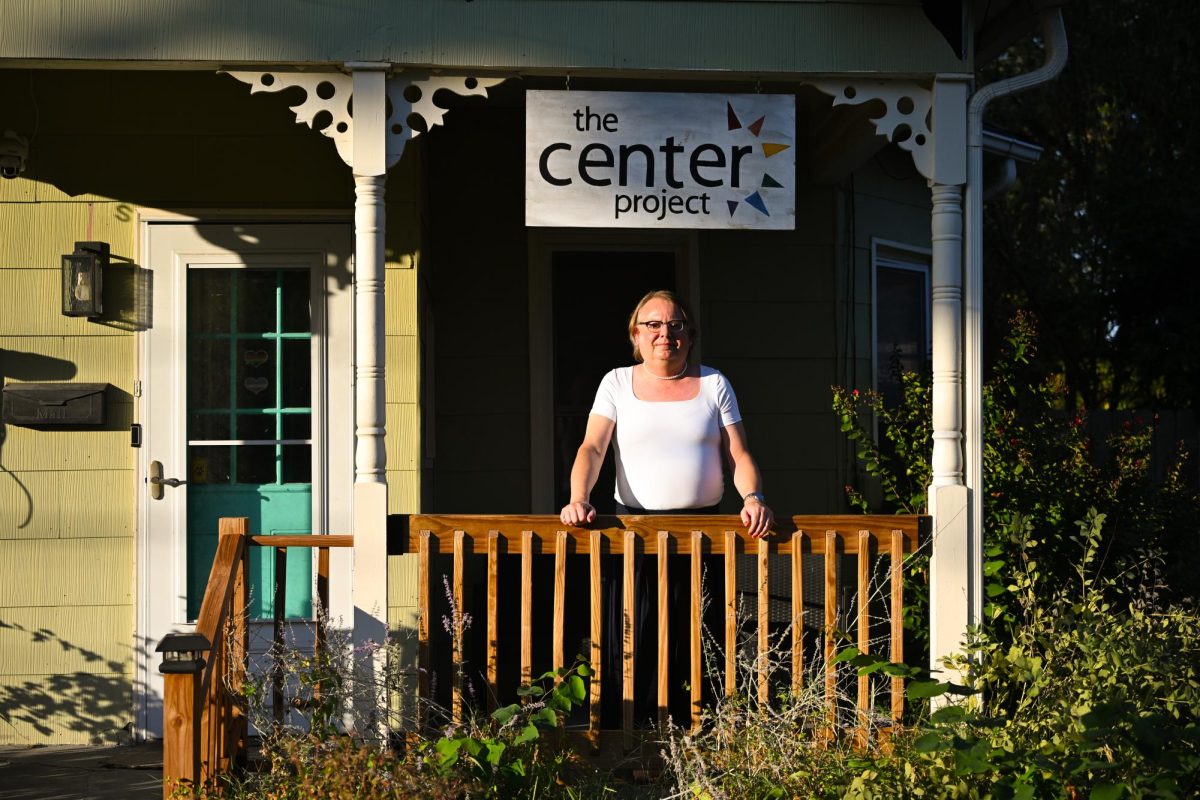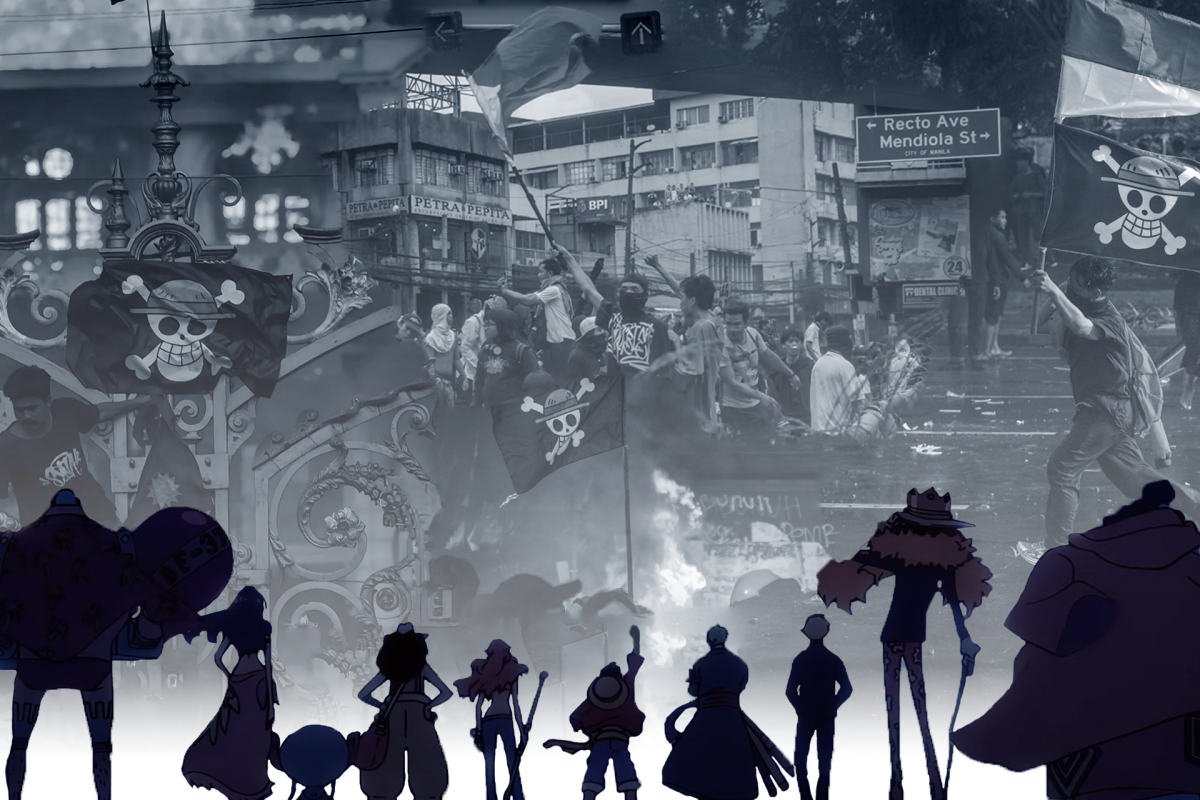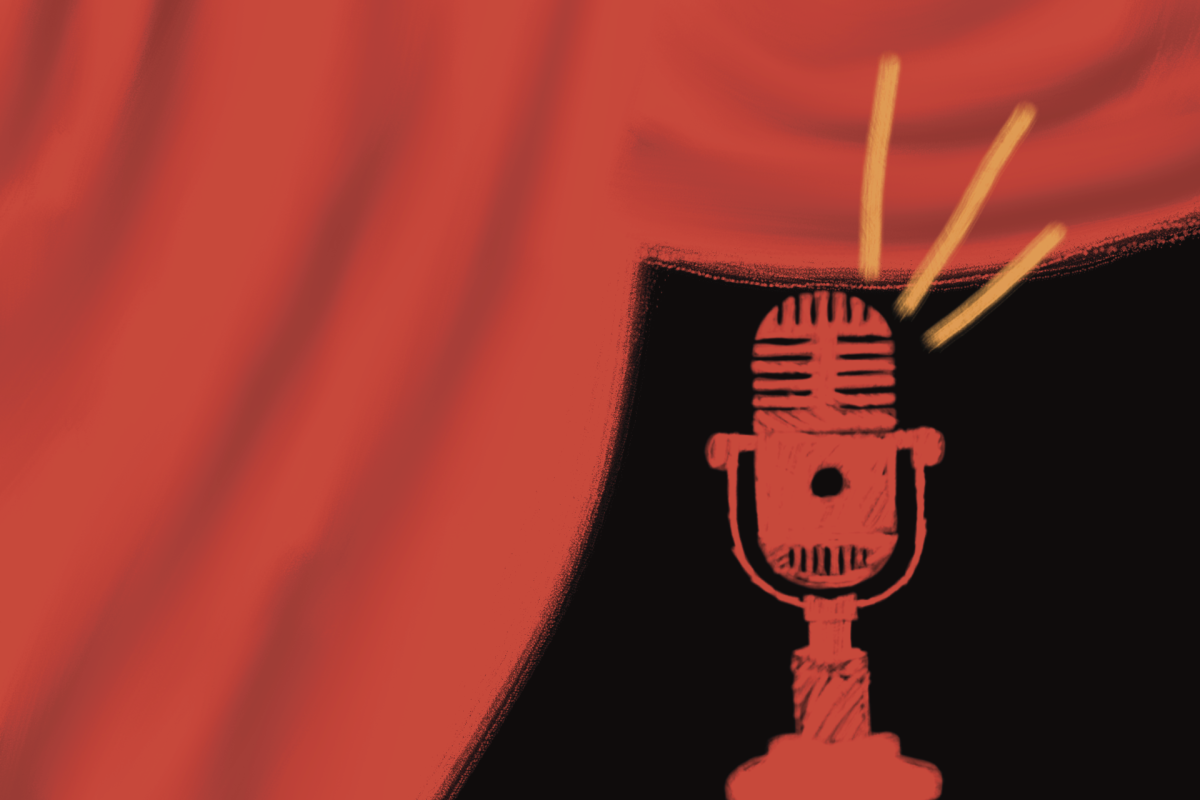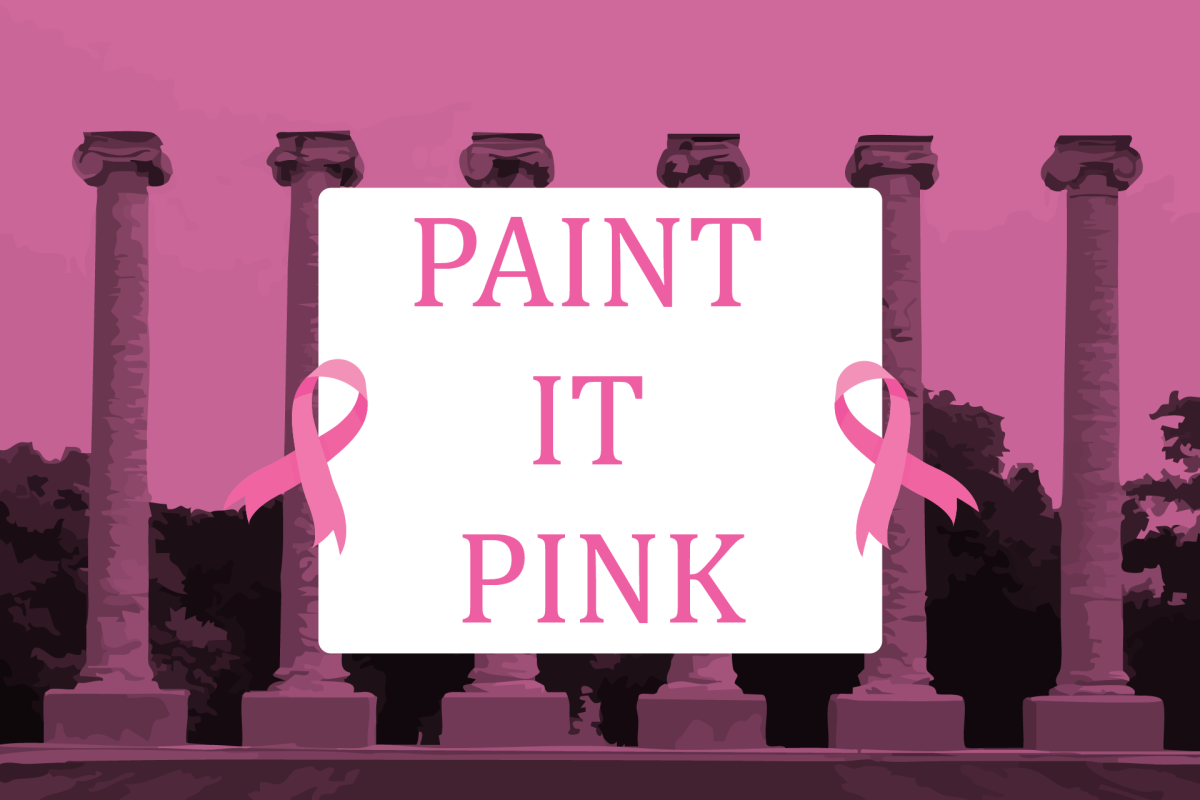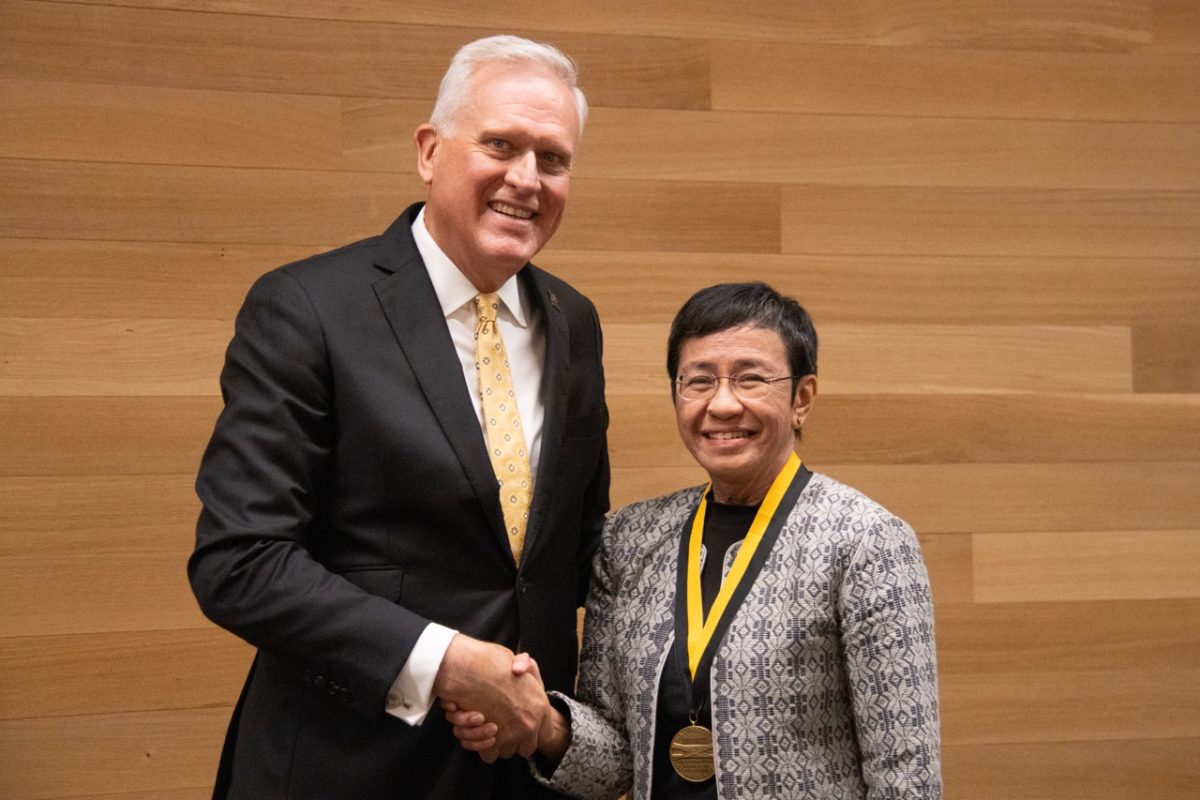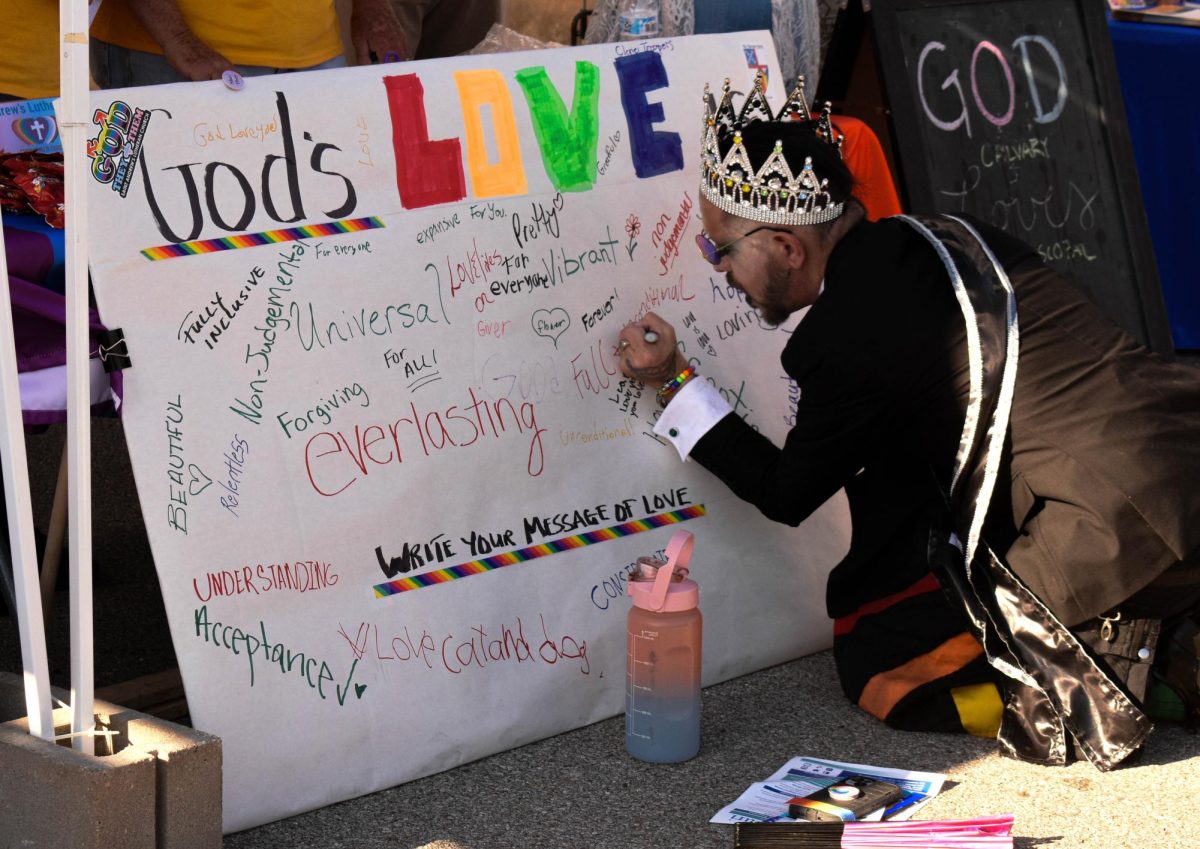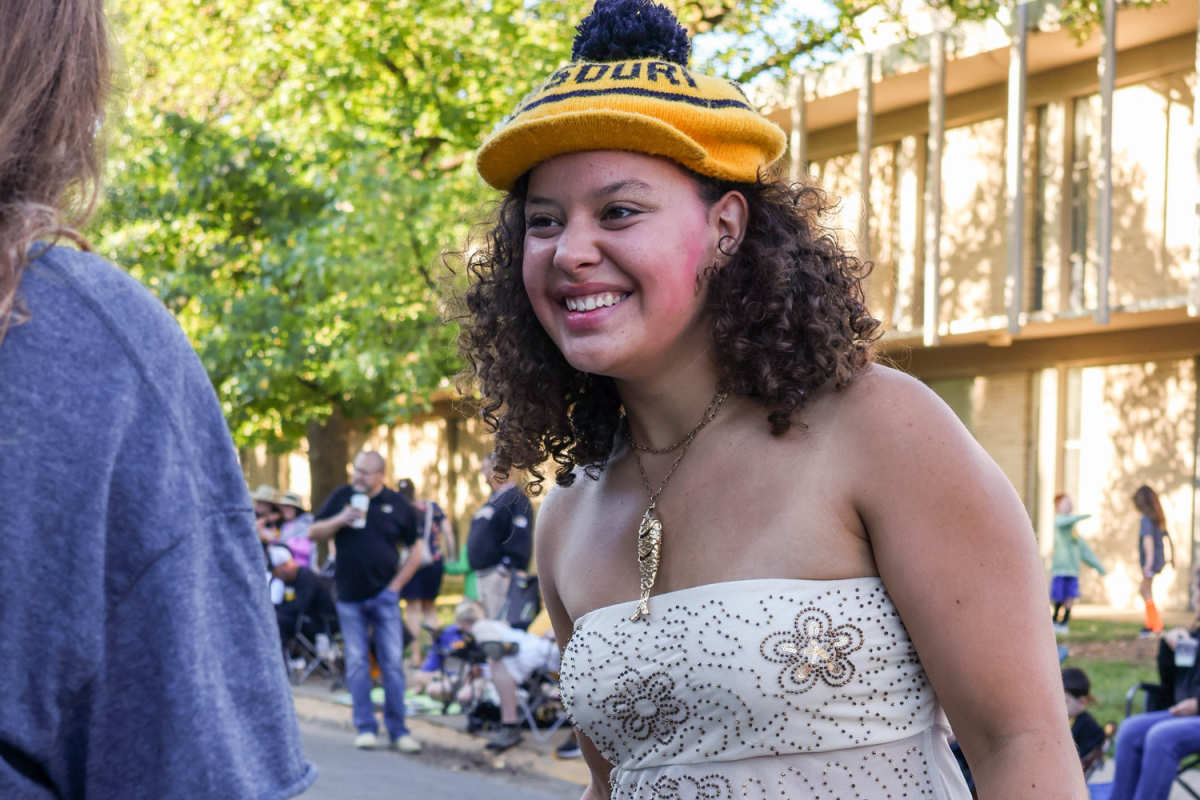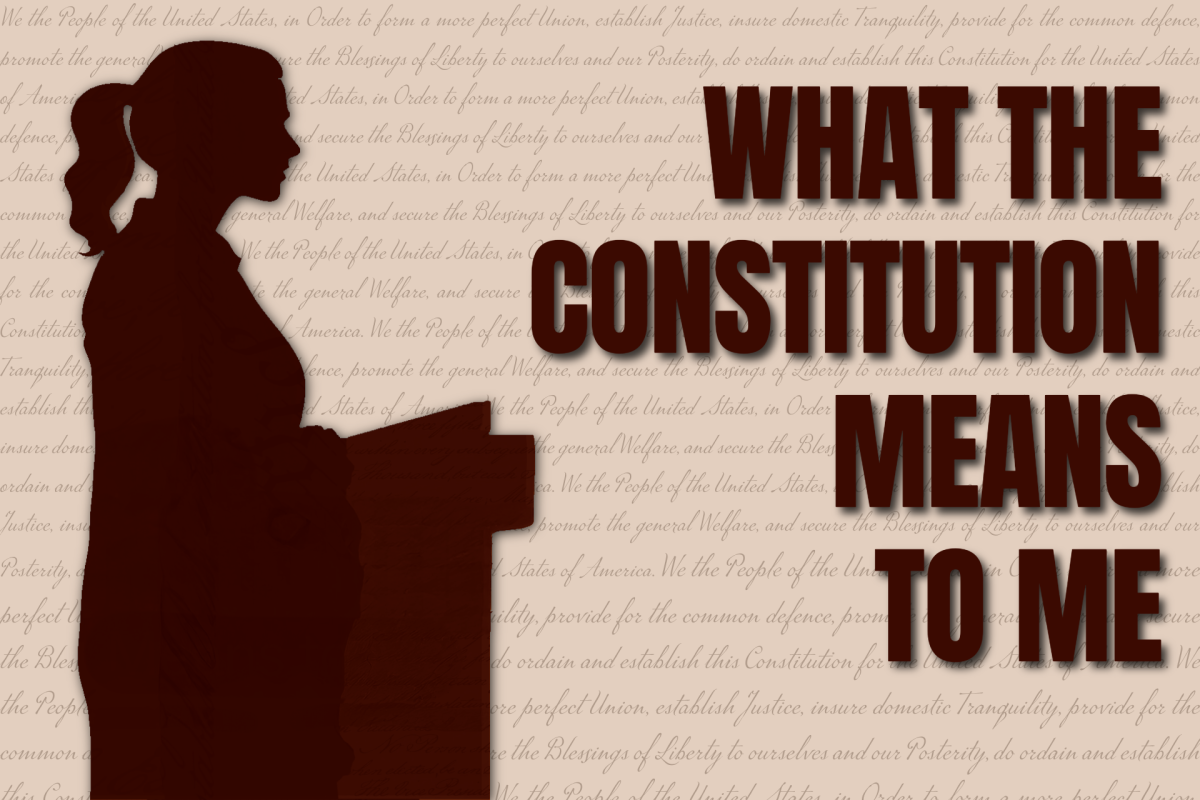Intertwined with the permanent collection at MU’s Museum of Art and Archaeology are various pieces on display as part of the American Women Artists Since the Vote exhibit to honor women artists.
The exhibit, which includes all pieces in the museum tagged with purple stickers, “celebrates the centenary of the Nineteenth Amendment and the achievements of American women artists from every decade since 1920,” according to the exhibit description on the museum website.
The temporary exhibit opened in-person on Nov. 3, 2020, and includes various types of art. Due to the COVID-19 pandemic, the museum has provided a more extensive version of the exhibit online.
“I wanted to include pieces by American women artists from the past 100 years,” Dr. Alisa McCusker, curator of European and American Art at the museum, said. “I wanted to include as many different voices as I could, trying to think about what individuals’ cultural, social and ethnic backgrounds or family heritages might be as well.”
The exhibit includes pieces of many forms including paintings, sculptures, printmaking, works on paper, fiber arts and ceramic arts. Some of which haven’t been showcased for years.
As one of the developers of this exhibit, McCusker believes that exhibits showcasing women’s work is of the utmost importance, noting that museum exhibitions are dominated by white men. In U.S. art museums, 87% of the artists are men and 85% are white, according to the peer-reviewed journal, PLOS One.
“Essentially our historical narratives, including the narratives of arts and culture, are dominated by white, mostly affluent men,” McCusker said. “It’s an unfortunate reality that in our patriarchal systems, as we try to understand, dismantle and overcome them, that this [exhibit] is necessary, and we have to go through these processes of recognizing achievements by individuals and groups that are not part of that dominant culture.”
To the public, this exhibit is meant to shine light on women’s art in the Columbia community.
“It’s about looking at people’s experiences, like each piece of art is something that the artist was experiencing or was just wanting to share,” museum visitor Elizabeth Olree said. “That’s not something you would see otherwise if you didn’t take the time to look at the art.”
Museum Educator Dr. Cathy Callaway emphasizes the importance of having art in Columbia itself.
“There should be free and accessible art in every town in Missouri,” Callaway said.
Callaway, an employee of the museum for 15 years, was also involved in compiling the pieces for the online and in-person exhibit with McCusker.
The exhibit will be open for the rest of Women’s History Month and will close on April 4. The museum allows up to 20 visitors at a time and is ADA accessible.
McCusker believes that exhibits that center women’s art is a sign of progress towards more equitable art demonstrations.
“Exhibitions like this are starting to chip away at rigid expectations that people have of museums, of who should be exhibited, what kind of art and what kinds of artists should be represented,” McCusker said. “I hope people take away from this exhibition that yes, we should see just as many women artists as male artists.”
For more information, refer to the museum website.
_Edited by Angelina Edwards | [email protected]_


